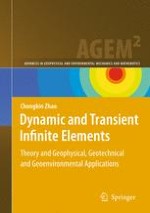2009 | Buch
Dynamic and Transient Infinite Elements
Theory and Geophysical, Geotechnical and Geoenvironmental Applications
verfasst von: Chongbin Zhao
Verlag: Springer Berlin Heidelberg
Buchreihe : Advances in Geophysical and Environmental Mechanics and Mathematics
